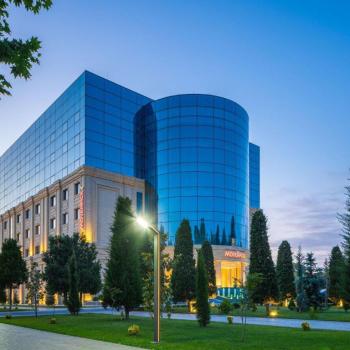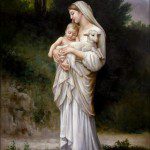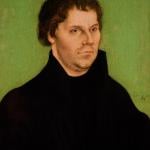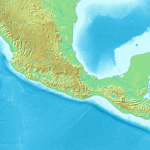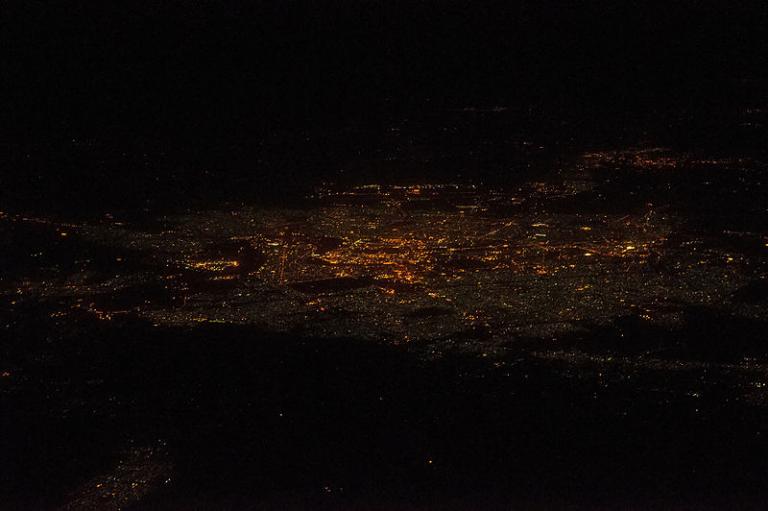
Every day, a bit more from one of my manuscripts:
But the emphasis of the ulama on law and on behavior came, in the eyes of some highly committed Muslims, to seem a mere concentration on the externals, on the letter and not the spirit of Islam. They yearned for a more personal and warm relationship with God than plain obedience to a law code could possibly supply. Among these pious Muslims were the Sufis, the Islamic mystics, who were more concerned with contemplative or introspective spirituality. (Their name comes from the simple woolen clothing they preferred.)[1] The Sufis prevented Islam from becoming a cold religion of heartless external observance, and they gave to the Muslims and to the world in general some of the finest religious literature produced anywhere.
The worldly culture of the court and the “polite classes,” by contrast, proceeded without much real reference to the ulama. The courtiers and the administrators of the empire gave honor to the ulama—often, no doubt, sincerely—but generally followed lifestyles of which the ulama did not approve. Etiquette, conversation, clothing, fine arts, literature, poetry, music—these were the concerns of the political and social elite. Manuals were actually published, for the benefit of the courtiers and the scribes, that listed in concise form the basic information that a cultivated man ought to know. (It was a kind of intellectual “Dress for Success” technique, with scraps of literature, history, geography and biology—especially of the “Believe It or Not” variety. The emphasis was on anecdotes and curiosities, to enable the would-be social climber to sparkle in polite, urbane conversation.)
The high point of the Abbasid caliphate and of the empire over which the caliph presided probably came during the splendid and luxurious reign of Harun al-Rashid.[2] Ruling from the great city of Baghdad around the year 800 A.D., Harun was a contemporary of Charlemagne. But his empire was incomparably more magnificent than Charlemagne’s, excelling it as far as Baghdad excelled Aachen, Charlemagne’s capital. Harun was a great patron of culture. Poets, musicians, jurists, historians, scientists, architects, creative minds and hands of all types found support from him. His reign is recalled so fondly in Arab tradition that he even finds a prominent place in the tales of the Thousand and One Nights. In those stories, he is depicted wandering around Baghdad in disguise, with his prime minister at his side, to see what his city and its residents were really up to. He gets into many adventures, and has many a narrow escape, but he emerges from it all as a kindly and good-natured man, sincerely interested in the welfare of his subjects. (However, these stories of the disguised and wandering ruler seem to have been directly inspired by an eleventh-century Egyptian ruler, al-Hakim bi Amr Allah of the Fatimid dynasty, rather than by the historical Harun al-Rashid. Harun’s name somehow became attached to the figure, and the scene of the action was somehow transferred from Cairo to Baghdad.) It was a time of peace and great prosperity; a check could be written in Egypt and drawn on a bank in Iraq (which may occasionally be more difficult nowadays than it was then.) The government’s policy was what we might today call laissez faire or the free market. This may have been one of the secrets of the era’s wealth. The purpose of the state was little more than to maintain law courts, to defend the frontiers, and to preserve the citizens’ security in the streets and on the roads of the empire. Government inspectors saw to it that weights and measures were honest and that the coinage was sound; otherwise, commerce was free and, on the whole, unregulated. The wealthy members of society, including the caliph, gave generously to charities in their capacities as private people.
[1] The Arabic word suf means “wool.” It is pronounced “soof,” and the individual mystic is a “SOO-fee.”
[2] Pronounced “Hah-ROON ar–Rah–SHEED,” the name or title of this ruler is Arabic for “Aaron the Rightly-Guided.”
Posted from Oceanside, California



